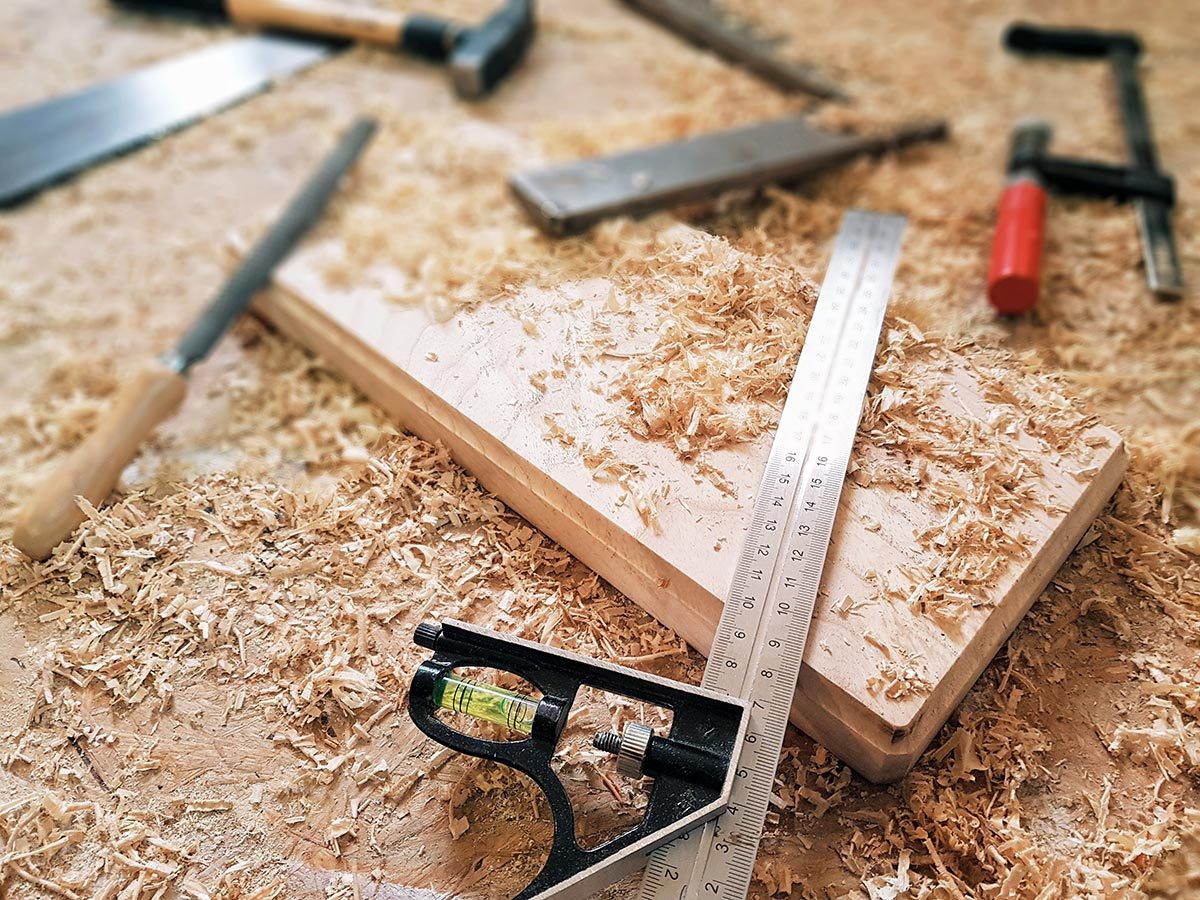Woodworkers that are making cabinetry out of attractive, expensive hardwoods are often unsure about what to use when it comes to drawer construction. Should the back, bottom and inside of the drawers match the same wood as the face, or front of the drawer and the rest of the cabinet? With this in mind, it will become uniform, and perfectly match the face of the drawer. However, some of the advantages of building drawers in this manner may well be outweighed by the merits of using different types of wood. Sometimes the woodworker (always well-intended, I can assure you) will write instructions such as: “Build the drawers using your method of choice.” That’s all well and good if you’re like a lot of woodworkers and have never actually chosen a set method of drawer-making. To get around this problem, we’ve come up with four excellent techniques for building drawers that our editors have refined through years of woodworking.
Drawer Basics
When you begin designing a drawer, and coming up with a cutting list, here are some guidelines we like to follow.
In general, the drawers’ front should be about 3⁄4″ thick – unless it’s a drawer with what is called a “false front”. False-front drawers are simple drawer boxes with the front attached to the box. It’s a very handy way for drawer fronts to fit in projects where the drawers run on metal sliders. Both sides and the back of the drawer should be about 1⁄2″ or 5⁄8″ thick. It’s advisable to use thinner stock for smaller drawers and thicker stock for larger ones. Usually the bottom is 1⁄4″ thick plywood for small drawers and 1⁄2″ thick material for larger drawers, or drawers that will be holding heavy objects. The drawer bottom should be able to slide into the drawer in 1⁄4″ x 1⁄4″ grooves milled into the sides and drawer front. When the bottom is thicker than 1⁄4″ you’ll need to cut a bevel or rabbet on its edges. The back of the drawer should be 1⁄2″ narrower than the sides, this allows the bottom to slide into place at the rear.
Best Wood Types For Drawer Construction
Choosing the right wood for drawer construction is crucial for durability, stability, and aesthetic appeal. Here are some of the best wood types for constructing drawers:
1. Hardwoods
Oak
- Durability: Highly durable and strong.
- Appearance: Distinct grain patterns, available in red and white varieties.
- Finish: Stains and finishes well.
Maple
- Durability: Very hard and strong.
- Appearance: Smooth grain, light color.
- Finish: Takes paint and stain well, often used for its natural light finish.
Cherry
- Durability: Durable and moderately hard.
- Appearance: Reddish-brown color that deepens with age.
- Finish: Smooth finish, polishes well.
Walnut
- Durability: Strong and stable.
- Appearance: Rich dark brown color with a straight grain.
- Finish: Polishes well, excellent for a luxurious look.
2. Softwoods
Pine
- Durability: Softer, more prone to dents and scratches, but still a good choice for drawers with light use.
- Appearance: Light color with a pronounced grain.
- Finish: Takes paint and stain well, often used in rustic or country-style furniture.
3. Engineered Woods
Plywood
- Durability: Very stable and resistant to warping, made by layering thin sheets of wood veneer.
- Appearance: Can have a smooth surface if using high-grade plywood.
- Finish: Can be veneered or painted to match the desired look.
Baltic Birch Plywood
- Durability: Extremely stable and strong, made with more layers than regular plywood.
- Appearance: Light color with a smooth surface.
- Finish: Excellent for painting, staining, or leaving natural.
4. Exotic Woods (for high-end drawers)
Mahogany
- Durability: Strong and highly durable.
- Appearance: Rich, reddish-brown color with a fine grain.
- Finish: Polishes to a high shine, giving a luxurious finish.
Teak
- Durability: Extremely durable and resistant to moisture.
- Appearance: Golden brown color with a straight grain.
- Finish: Naturally oily, excellent for outdoor and bathroom furniture.
Tips for Choosing Wood for Drawers
- Match the Wood Type: If the drawer is part of a larger furniture piece, match the drawer wood type to the rest of the furniture for a cohesive look.
- Consider the Use: For heavy-use drawers, opt for harder woods like oak or maple. For lighter use, pine or lower-cost woods may be sufficient.
- Stability: Engineered woods like plywood or Baltic birch plywood are excellent for resisting warping and maintaining structural integrity.
- Aesthetic: Choose a wood type that complements the overall design and look of the piece. Exotic woods are great for high-end projects where appearance is key.
Selecting the appropriate wood type ensures that your drawers will be both functional and visually appealing for years to come.
Premade Drawer Boxes
Making drawer boxes soaks up a lot of time for your lead cabinetry builders. Ordering premade drawer boxes from Drawer Connection saves valuable time for your builders to stay focused on installing cabinetry. This cuts down on turnaround, means more jobs get done per year, and happier cabinetry customers.







